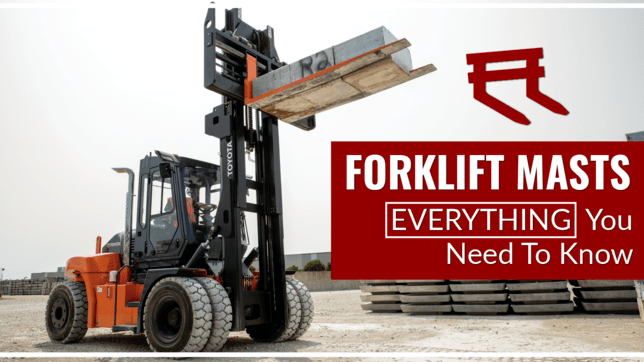This article covers everything you need to know about forklift masts.
In it, you’ll learn:
- What forklift masts are
- The different types of masts
- How to choose the right mast
- And much more…
Let’s dive in!
What Is a Forklift Mast?
A forklift mast, also called an upright, is the part of the forklift that lifts, lowers, and positions the load.
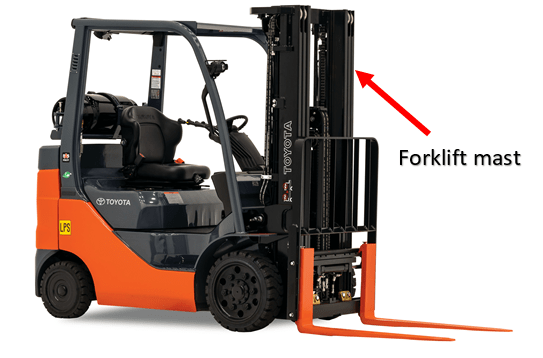
The mast is the “working” part of the forklift that allows vertical movement
In other words, it’s the component that actually does the primary work that a forklift is designed to do.
There are different types of forklift masts to fit different jobs and material handling specifications.
We’ll cover those later on.
Forklift Mast Terminology
The following are some important forklift mast terms you should know:
Maximum Fork Height
The maximum fork height (MFH) is how high the forks will actually go when you fully extend the mast.
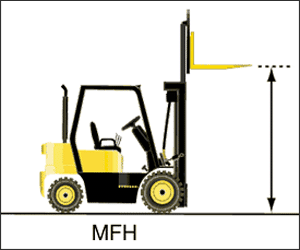
The maximum fork height is how high the forks go when fully extended
It’s measured from the ground to the top of the forks.
Overall Raised Height
Unlike maximum fork height, the overall raised height is measured from the top of the mast (or load backrest) when the mast is fully extended.
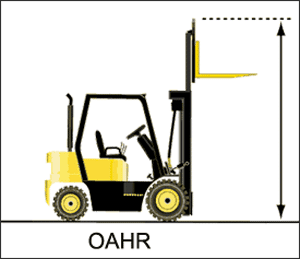
This measurement is important to know since a fully extended mast can damage overhead obstructions like semi-trailer ceilings and sprinkler systems.
Overall Lowered Height
This is the height of the mast when it’s fully lowered.
It’s measured from the floor to the top of the mast.
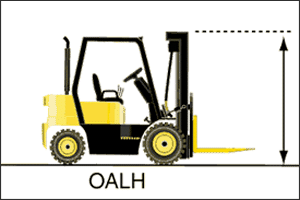
This measurement is important because it determines what areas you can fit the lift into within your facility.
For instance, if you have 8-foot door heights, you’ll need a forklift with a collapsed height of fewer than 8 feet.
Free Fork Height
This refers to the amount of free lift available.
What is free lift on a forklift?
It’s the ability of the carriage to rise without making the inner rails protrude from the top of the mast.
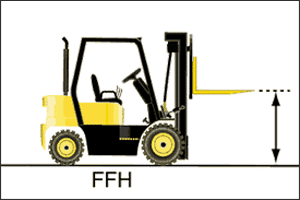
Why is this important?
Because a free lift forklift can lift in low-height areas like semi-trailers without damaging the ceiling.
The Components of a Forklift Mast
What are forklift masts made of?
Answer: High-strength steel.
But beyond material composition, forklift masts have different parts to them.
These forklift mast parts include:
Rails
Rails are the actual structure of the mast.
There’s an outer rail and nested inner rails.
As the hydraulic cylinders put pressure on the lift chains, the inner rails rise from the top – just like a telescope.
The rails allow the forklift mast to extend up to its maximum fork height (MFH).
Carriage and Load Backrest
The carriage is a solid steel frame that fits inside the mast rails.
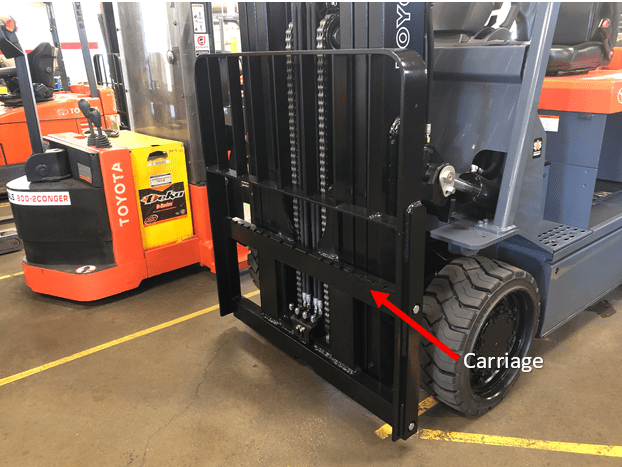
It’s the part of the forklift that actually moves the load up and down.
Forks or other attachments mount on the carriage along with the load backrest.
The load backrest bolts onto the carriage.
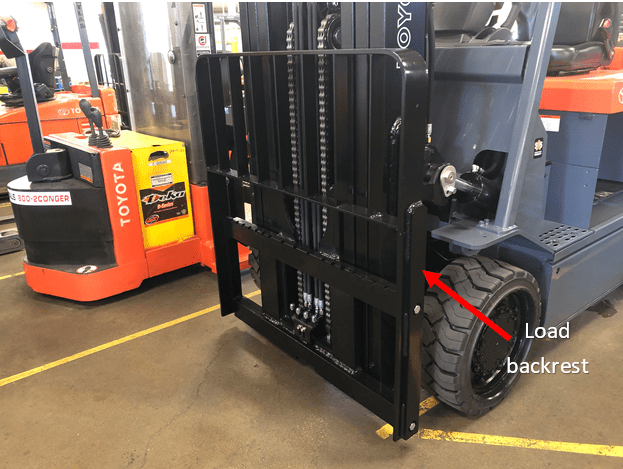
Its job is to prevent the load from tumbling backward off the forks (and even onto the forklift itself).
Mast Guide Rollers
Forklift masts have built-in bearings and rollers which provide the means for moving the rails and carriage.
There are four types of forklift mast bearings:
-
Mast guide bearings
These guide each mast stage as it travels upward. They also attach the carriage to the mast rails
-
Carriage bearings
These limit the carriage’s lateral movement as it travels up the mast
-
Side thrust rollers
These transfer the carriage load sideways to the mast to prevent twisting
-
Chain roller bearings
These exist within a flanged pulley which keeps the mast chains in place and guides them as the mast is raised and lowered
Lift Cylinders
Also called hydraulic cylinders, lift cylinders harness hydraulic power to pull the lift chains and raise the mast rails.
This allows the lift truck to fulfill its main function: Raising and lowering the load.
Lift cylinders can be of 2 types:
-
Free lift, which is located in the center of the mast:
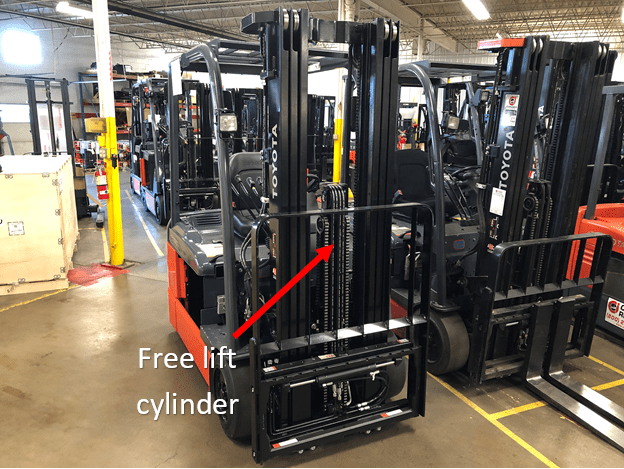
-
Outboard, which is located outside the mast:
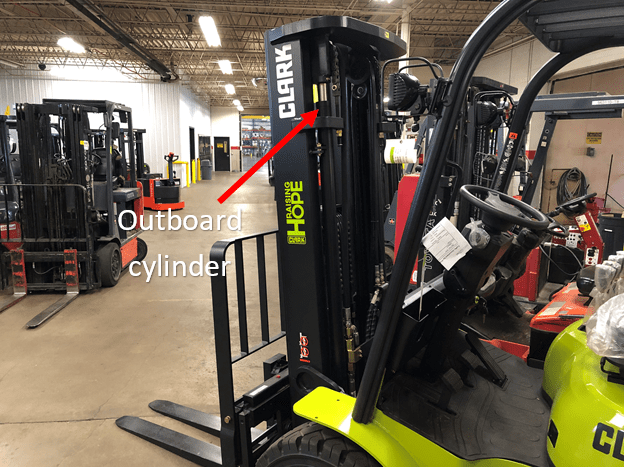
Lift cylinders use the highest volume of hydraulic fluid and typically push only in one direction.
However, negative lift cylinders also exist.
This style of cylinder applies force upward and downward.
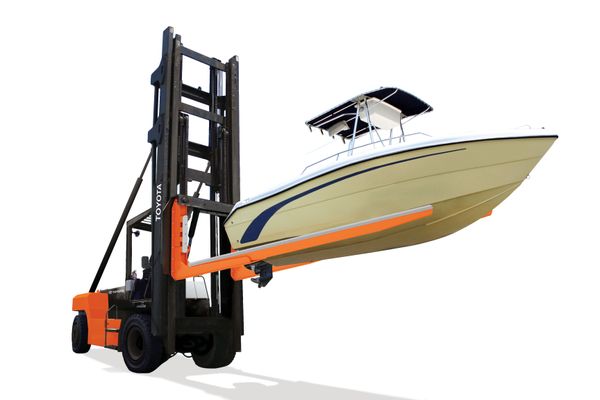
They’re used primarily in marina forklifts, which need to lower the forks below ground level and into the water to place or retrieve boats.
Tilt Cylinders
Tilt cylinders provide forward and backward movement to the mast.
They’re double-acting hydraulic cylinders, allowing them to both push and pull.
Most forklifts have two tilt cylinders.
One connects the mast assembly to the right side of the forklift chassis.
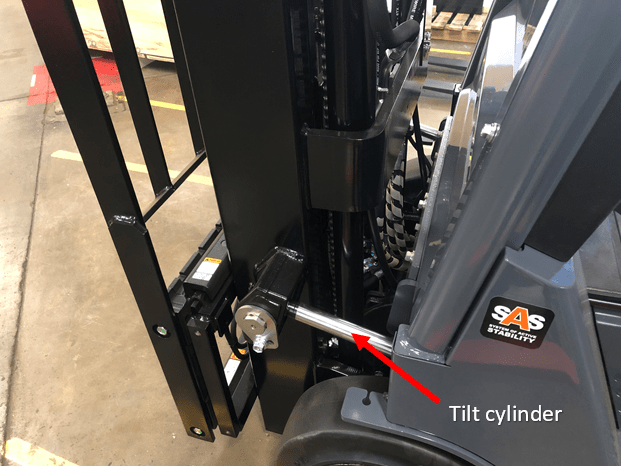
And the other is attached to the left side.
This provides uniform control when tilting forward or backward.
And it prevents twisting during operation.
Lift Chains and Anchors
Forklift mast chains are the linkages that raise or lower the carriage.
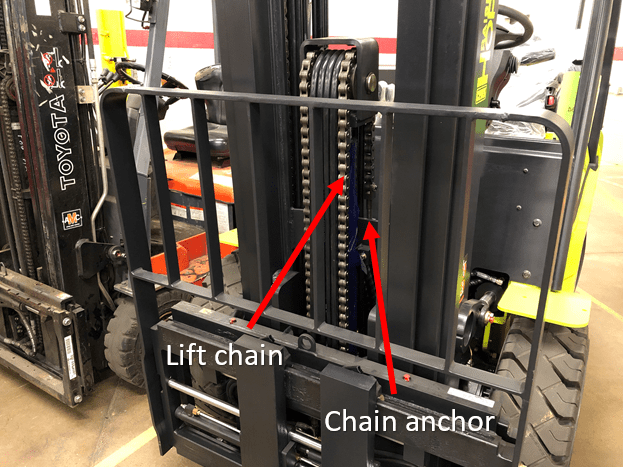
The forklift mast chain functions in combination with lift cylinders and rails to do this.
The anchors are what secure the chains to the carriage and mast rails.
How Do Forklift Masts Work?
Forklift masts use hydraulic pressure for movement.
How does this happen?
The hydraulic system has a series of pumps, cylinders, pistons, and fluids that work together to create the hydraulic pressure that lifts and lowers forklift loads.
Here’s the process:
- 1 The forklift engine (in internal combustion trucks) or the battery (in electric trucks) supplies power to the hydraulic pump
- 2 Rotating gears within the pump pull hydraulic fluid from the hydraulic tank and into the control valve
- 3 The control valve stops, starts, and controls the direction of the fluid to the hydraulic hoses or lines
- 4 The hydraulic hoses or lines connect to the lift and tilt cylinders within the mast
- 5 Fluid pressure against the pistons within the hydraulic cylinders cause them to rise, pushing the mast rails upward
- 6 Within the mast, chains are routed over a pulley system, which is connected to the forklift carriage
- 7 As the cylinders raise and the mast rails extend, the chains apply force to the carriage, lifting the forks
Watch this video to see how a forklift mast works:
To lower the mast and load, the process explained above happens in the opposite direction.
Additionally, a flow valve regulates the flow of hydraulic fluid.
And this helps prevent gravity from dropping the load uncontrollably.
Forklift Mast Types
There are 4 different forklift mast designs.
Let’s go through each one.
Single-Stage Masts
A single-stage forklift mast – also called a simplex mast – has one mast channel.
As a result, simplex forklift masts have very limited lifting heights.
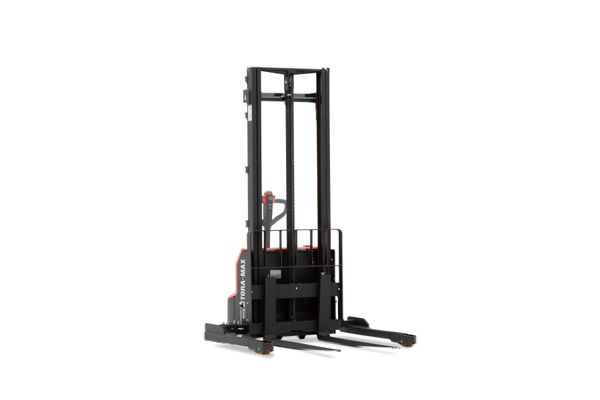
But what they lack in lifting height they make up for in visibility.
That’s because they have fewer components within them to obstruct the operator’s view.
Two-Stage Masts
A two-stage – also called a double or duplex – mast has two channels or sections.
Of its two sections, the outer section doesn’t move.
But the inner section does rise up to hoist the carriage.
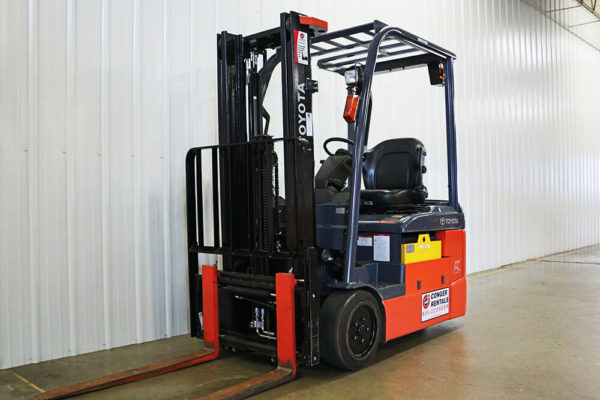
These masts may or may not have a free lift cylinder.
If they do not have one, they’re called a “V” mast, which stands for “view.”
If they have a free lift cylinder, they’re called an “FV” mast, which stands for “free-lift view.”
How High Is a 2-Stage Forklift?
For a 5,000 lbs. capacity forklift, a 2-stage mast without free lift can range from 80″ to 159″.
For those with free lift, the range is 120″ to 140″.
Three-Stage Masts
What is a 3-stage mast on a forklift?
Answer: It’s a mast that has three sections.
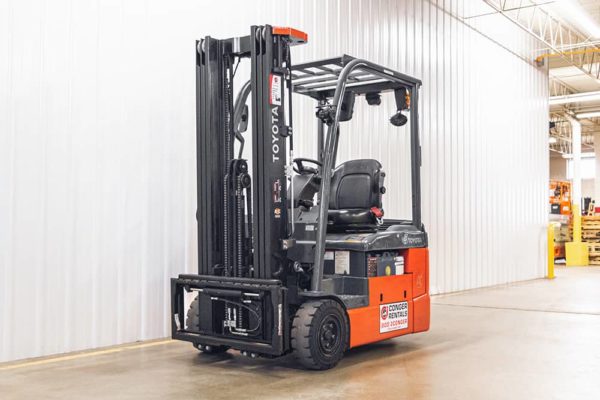
These masts are the most common type you’ll see.
Also called triplex, three-stage upright (TSU), or FSV, these masts all have free lift cylinders.
Because they can reach greater heights – from 159″ to 238″ – they’re popular in warehousing, construction, and rental fleets.
Four-Stage Masts
A four-stage – or quad – mast uses four sets of rails with an added set of chains to give four stages of lifting with full free lift.
Other names for a four-stage mast are:
- Quad
- Quadraplex
- QFV
Thanks to its four sets of moving rails, a quad mast forklift provides the highest reach – 278″ or more.
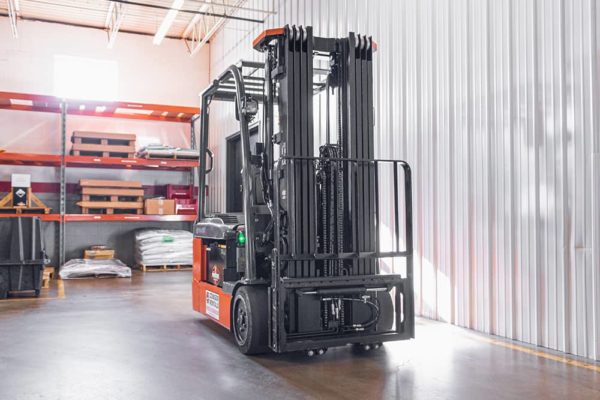
This is very useful in high stacking warehousing.
But a 4 stage forklift does have its drawback: Greatly reduced visibility.
That’s because of the extra rails and hoses within the mast, which make it harder to see through.
As a result, operators of quad mast forklifts must take extra care when driving and lifting.
How High Can a Forklift Reach?
The most common lift height for a sit-down rider forklift is 189 inches.
That’s about 15 feet.
But certain specialty forklifts like reach trucks can reach 301 inches or – 25 feet – more.
You’ll find these trucks in warehouses with extra-tall racking.
How to Choose the Right Mast: 4 Key Factors
The last thing you want when buying or renting a forklift is to choose the wrong mast for your application.
So to make the right choice, consider the following factors:
Lift Height
How high do you need to lift to store or retrieve materials or products?
When selecting your forklift mast, add 6 inches to your highest racking shelf.
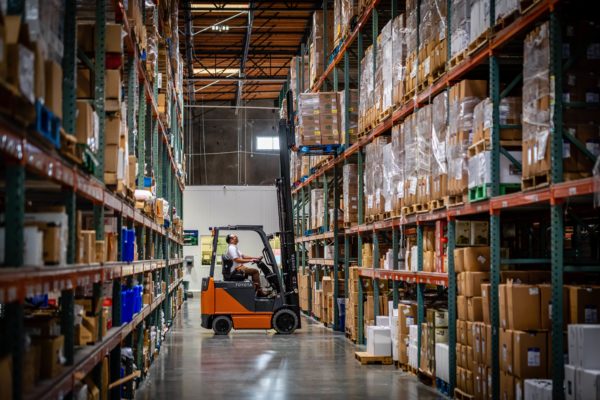
That’s because your forklift mast height should provide enough space to access your stored materials.
Lifting Capacity
How much weight do you need to lift?
Keep in mind that the taller the mast, the lower the lifting capacity.
For example, a 5,000 lbs. cushion forklift with a 131.5″ V mast is rated to lift 5,000 lbs. at full extension.
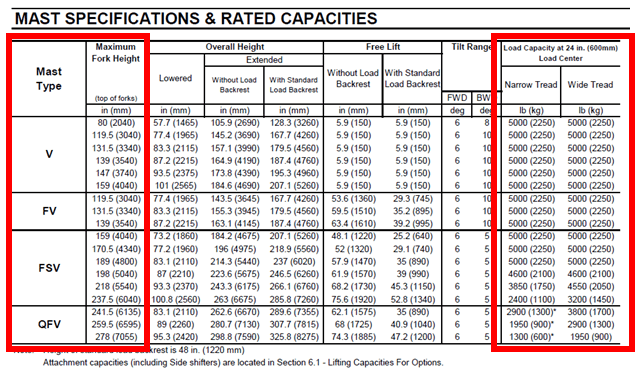
But that rating drops to only 2,900 lbs. for a 241.5″ quad mast.
Thus, you’ll need a larger capacity lift truck to accommodate taller masts.
Overhead Obstructions
How tall are your door openings?
You’ll need to make sure your collapsed mast is under that height.
Are you working in low-height areas like semi-trailers or rail cars?
You’ll need either a free lift or trucker’s mast forklift to ensure you don’t damage the roof.
What Is a Trucker’s Mast on a Forklift?
A trucker’s mast is a shortened 2-stage mast without free lift.
They have a much shorter lift height – usually around 6-feet.
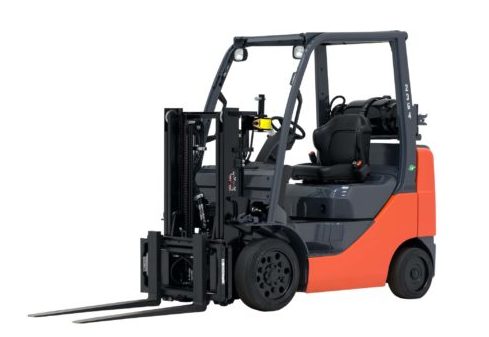
And they’re designed for stacking within semi-trailers.
Their advantage is that the shortened mast will not extend far enough to damage the trailer ceiling.
Visibility
Less visibility = higher risk of accidents.
Simplex or duplex masts without free lift have fewer components to obscure operators’ views.
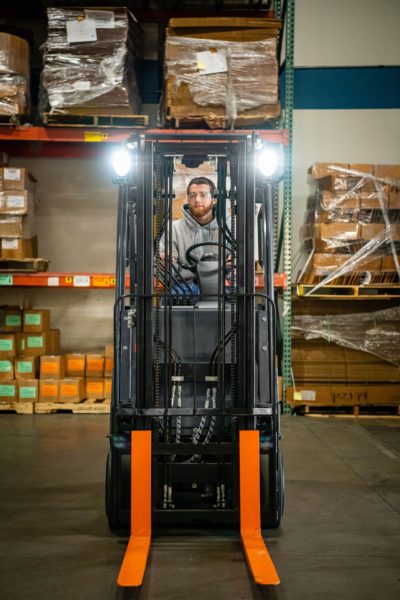
If you don’t need free lift, it might be best to go with one of these masts since they provide the best visibility.
Conclusion
That’s it: Forklift masts explained.
Which type of forklift mast is appropriate for your operation?
